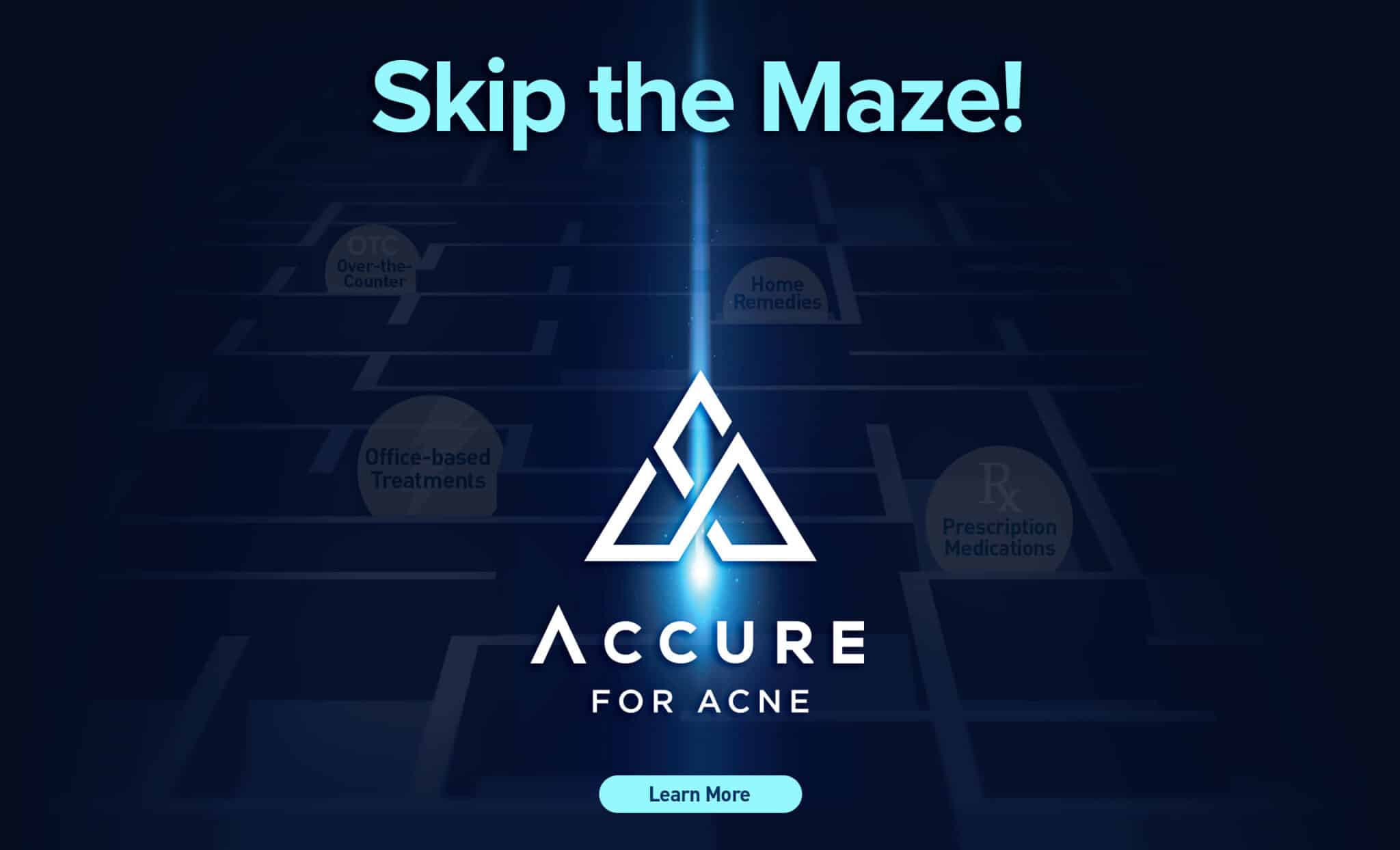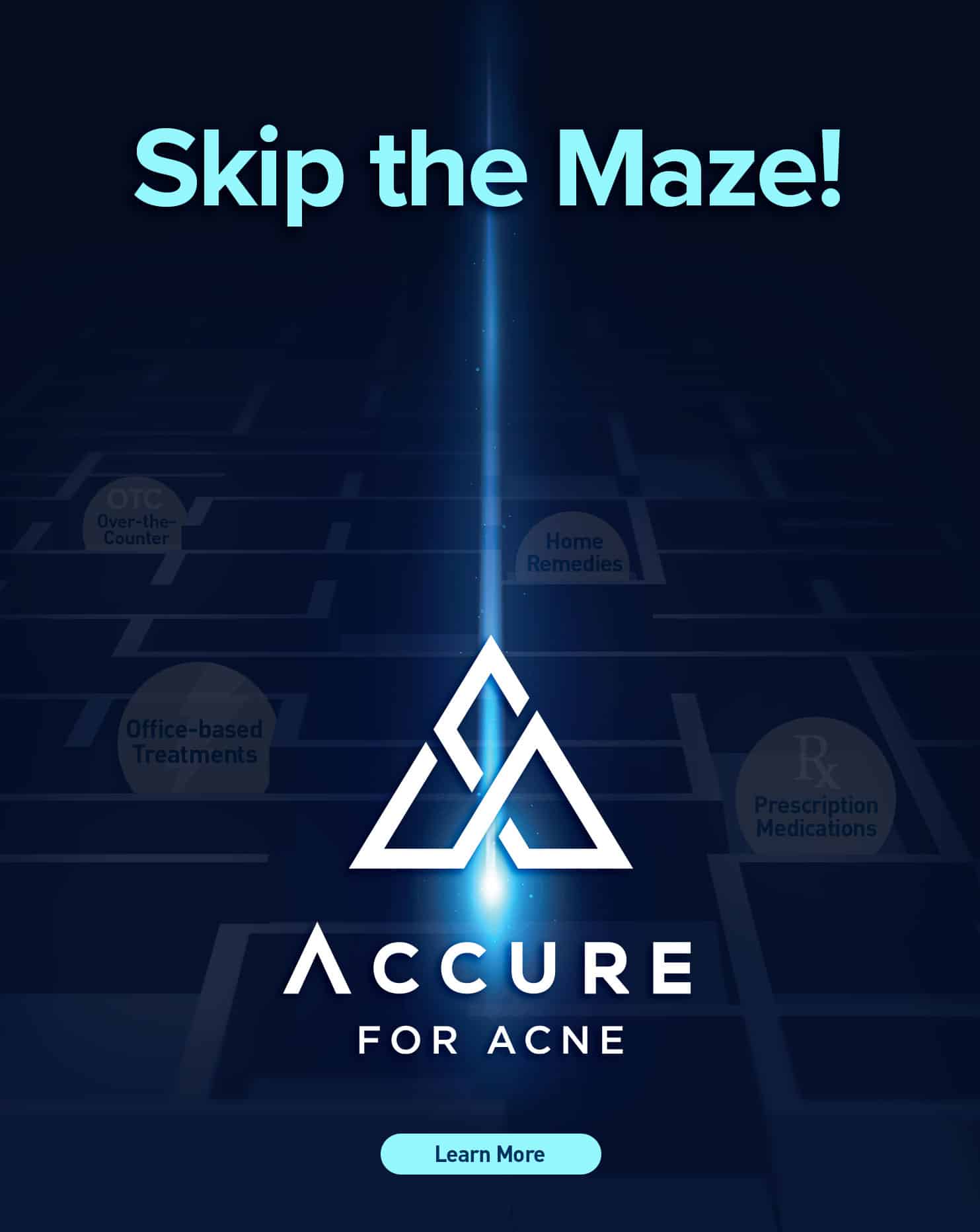...in the fight against acne


...in the fight against acne


Acne is the most common skin condition in the United States, affecting up to 50 million Americans annually,1 with an estimated cost of $3 billion in healthcare and lost productivity.2
Beyond what you can see, acne can also cause depression, anxiety, and low self-esteem.3 Unfortunately, current treatment options leave many people with acne unsatisfied.4
A Root Cause of Acne

Sebum is an oily, waxy substance produced by your sebaceous glands to help maintain skin health. However, overproduction of sebum – due to hormonal changes, genetics, and environmental factors – can cause acne.










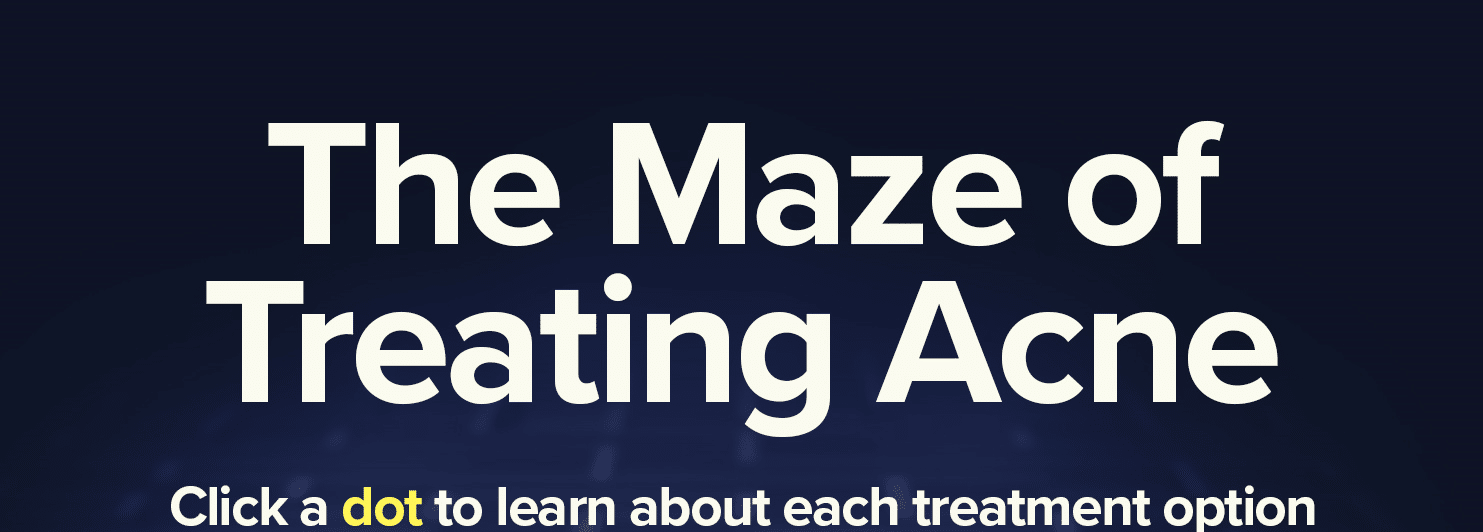





The Accure Acne Laser System:
Always consult a dermatologist to create an effective treatment plan based on your unique skin needs.
See the light and skip the maze of acne treatments that only provide temporary improvement or require long-term use or ongoing testing and monitoring.
With the Accure Acne Laser System, most patients will see dramatic results after just four treatments9 without the side effects associated with prescription acne medications.
References:
- American Academy of Dermatology (AAD) Association. Skin Conditions by the numbers: Acne. https://www.aad.org/media/stats-numbers and Bickers DR, Lim HW, Margolis D, Weinstock MA, Goodman C, Faulkner E et al. The burden of skin diseases: 2004 a joint project of the American Academy of Dermatology Association and the Society for Investigative Dermatology. J Amer Acad Dermatol. 2006;55:490-500.
- Bhate K, Williams HC. Epidemiology of Acne Vulgaris. Br Jf Dermatol. 2013;168:474-85. doi:10.1111/bjd.12149.
- American Academy of Dermatology (AAD) Association. Acne can affect more than your skin. https://www.aad.org/public/diseases/acne/acne-emotional-effects
- Hayran Y, İncel Uysal P, Öktem A, Aksoy GG, Akdoğan N, Yalçın B. Factors affecting adherence and patient satisfaction with treatment: a cross-sectional study of 500 patients with acne vulgaris J Dermatol Treat 2021; 32 (1): 64-69. doi:10.1080/09546634.2019.1618434
- Mayo Clinic. Nonprescription acne treatment: Which products work best? https://www.mayoclinic.org/diseases-conditions/acne/in-depth/acne-treatments/art-20045814
- Pike HD, Sadiq NM. Isotretinoin (book). https://www.ncbi.nlm.nih.gov/books/NBK525949/
- Mayo Clinic. Tretinoin (Topical Route). https://www.mayoclinic.org/drugs-supplements/tretinoin-topical-route/side-effects/drg-20066521?p=1
- Jih MH, Kimyai-Asadi A. Laser treatment of acne vulgaris. Semin Plast Surg. 2007;21(3):167-174. doi:10.1055/s-2007-991185. https://www.ncbi.nlm.nih.gov/pmc/articles/PMC2884837/
- In IRB-approved studies, patients showed an average 70% reduction in acne lesions 6 months after 4 treatments, spaced 1 month apart. Data on file, Accure Acne, Inc. Individual results may vary.
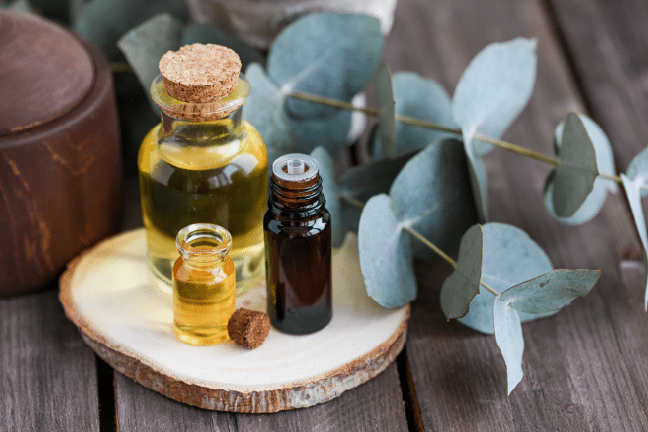
Home Remedies
Tea tree oil, aloe vera, green tea extract, evening primrose oil, eucalyptus
- Sometimes used as an alternative or complementary approach to acne and skincare
- Often include natural ingredients known for anti-inflammatory and antibacterial properties
- Potentially provide temporary relief and promote healthier skin; individual results may vary
- Can be beneficial for mild cases of acne, but may not provide the comprehensive results that a laser treatment can offer for moderate to severe acne, and will not address the underlying causes of acne or provide lasting effects
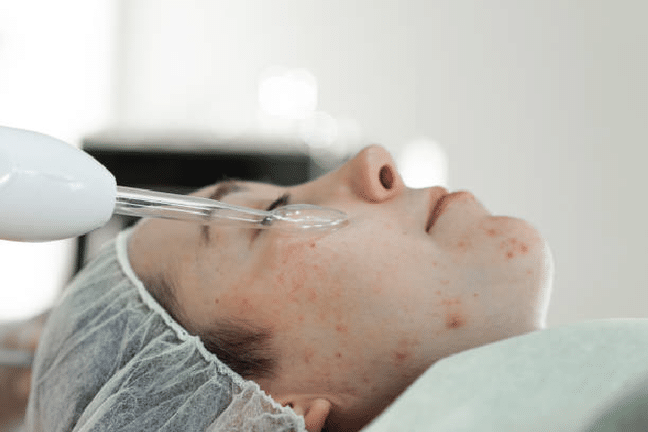
Office-based Treatments
Photodynamic therapy, pore-cleansing devices, chemical peels, energy-based devices, and lasers
- Can reduce inflammation and presence of bacteria
- People may experience side effects or find some procedures uncomfortable, leading to discontinuation or reduced compliance
- Some treatments have been associated with significant pain and post-treatment erythema, severe phototoxicity, pustular eruptions, and epithelial exfoliation8
- 1726 nm laser devices using a “treat-to-power” approach can result in variable treatment approaches and outcomes across different skin types
- Not all devices are cleared to treat acne on the body and face

Over-the-Counter Treatments
Cleansers, toners, astringents, lotions, creams, gels, ointments, benzoyl peroxide, adapalene, salicylic acid
- Treat symptoms of mild-to-moderate acne
- Do not target overactive sebaceous glands (a root cause of acne)
- Often require consistent, long-term use
- May not work for all skin types and sensitivities
- Side effects may include dry skin, scaling, and inflamed skin5
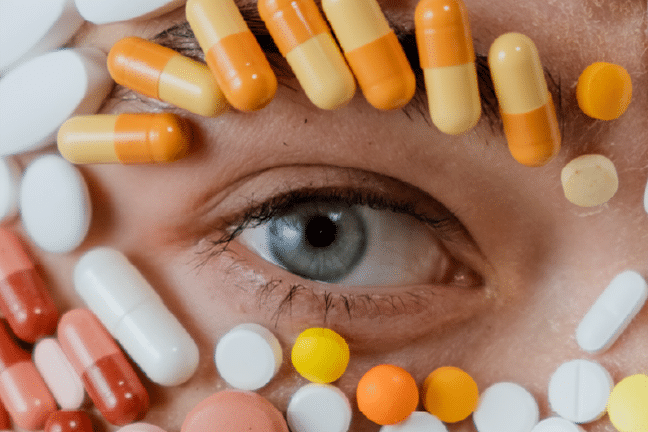
Prescription Treatments
Isotretinoin, tretinoin, most retinoids, azelaic acid (15%+), antibiotics
- May be more potent and diverse than OTC options, but effectiveness can still vary
- Often require consistent, long-term use
- Lack of adherence to or discontinuation of these treatments can result in suboptimal results
- Isotretinoin (oral), used to treat severe acne, requires frequent blood and pregnancy testing and avoiding sun exposure throughout treatment; side effects include dry or chapped lips, suicidal ideation, serious skin reactions, and endangering unborn baby (embryo-fetal toxicity), among others6
- Tretinoin (topical) common side effects include burning, itching, stinging, scaling, or redness of the skin7


